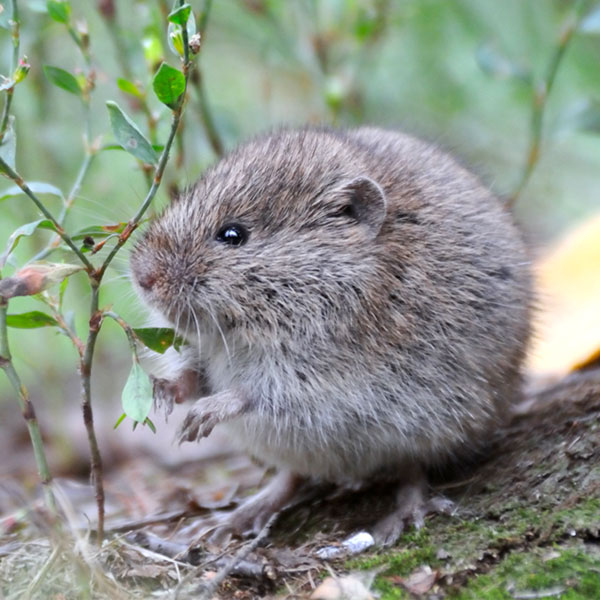Comprehensive Overview to Effective Vole Pest Control: Problem Recognition and Therapy Methods
In the world of reliable pest control, vole invasions pose an unique obstacle that demands a tactical approach. These tiny rats, frequently incorrect for mice, can damage yards, lawns, and plants if left unchecked. Determining the indicators of vole existence and carrying out targeted therapy approaches are vital components of a successful bug administration strategy. By discovering the subtleties of vole behavior, understanding essential indications of problem, and examining a range of control alternatives, one can establish a comprehensive strategy to fight these evasive bugs.
Recognizing Vole Actions
Vole actions is defined by their delving practices and rapid reproduction prices, making them a challenging parasite to regulate successfully. These tiny rodents generally develop elaborate passage systems underground, using them for shelter, food storage space, and transportation. Voles are herbivores, taking in a selection of plants, lawns, light bulbs, and origins, which can cause significant damage to yards, orchards, and lawns. Their quick reproductive price further makes complex control efforts, with women with the ability of creating several trashes in a solitary year, each containing several offspring.
Voles are most active throughout the very early morning and night hours, investing the majority of their time foraging for food. Their delving practices not only disrupt yards and grass but also make them testing to remove and detect. Recognizing vole behavior is important for effective insect control techniques. By identifying their burrow areas, checking feeding areas, and carrying out targeted control approaches, such as capturing or habitat modification, vole problems can be taken care of effectively.
Signs of Vole Infestation

Prevention Approaches
Executing effective avoidance techniques is crucial in lessening vole invasions and safeguarding vegetation from their damaging feeding routines (vole control). To stop vole invasions, it is vital to begin by eliminating prospective food sources and shelter. Keep turf and plants trimmed short, eliminate weeds and debris, and maintain a neat garden or Check This Out grass to make the location much less attractive to voles. Installing obstacles such as equipment towel or below ground secure fencing can also assist prevent voles from going into certain locations. In addition, reducing excess dampness by repairing leaky pipelines and guaranteeing appropriate drain can make the atmosphere less welcoming for voles.
Routinely inspecting the property for indicators of vole activity, such as runways and burrow openings, is important website link for early detection and timely action. Think about using repellents or traps tactically positioned near their pathways if vole task is thought. Utilizing all-natural predators like serpents or owls can additionally assist maintain vole populations in check. By applying a mix of these prevention techniques, garden enthusiasts and house owners can successfully safeguard their vegetation from vole damage.
Non-Lethal Control Methods
To effectively take care of vole populations while prioritizing gentle approaches, non-lethal control strategies provide functional options for minimizing vole damage in gardens and landscapes. These obstacles can be hidden at the very least 12 inches bent and deep at a 90-degree angle to protect against voles from delving beneath.

Lethal Control Options
One effective method for resolving vole problems in yards and landscapes involves the strategic usage of dangerous control choices. When faced with a severe vole problem that non-lethal methods have fallen short to have, carrying out dangerous control actions becomes crucial. have a peek at this site On the whole, when utilizing lethal control alternatives, it is important to do so responsibly and in conformity with regional regulations to properly take care of vole problems.
Final Thought
To conclude, reliable vole bug control requires a detailed understanding of vole habits, recognition of indicators of problem, implementation of prevention approaches, and use of both deadly and non-lethal control methods. By incorporating these approaches, people can efficiently handle vole populations and secure their property from damage. It is vital to deal with vole invasions quickly to protect against further problems and decrease the influence on the surrounding setting.
Offered the elaborate passage systems and quick recreation prices characteristic of voles, acknowledging the indicators of vole infestation ends up being necessary in effective insect control. One of the key indicators of vole presence is the existence of surface area paths or routes in turf or snow, generally concerning 1-2 inches broad, produced as voles travel in between their burrows and food resources.To properly handle vole populaces while focusing on humane methods, non-lethal control techniques use functional remedies for reducing vole damages in gardens and landscapes.One effective method for addressing vole invasions in landscapes and gardens entails the tactical usage of deadly control options. vole control.In verdict, effective vole parasite control requires a detailed understanding of vole habits, recognition of indicators of invasion, execution of prevention methods, and use of both non-lethal and lethal control methods